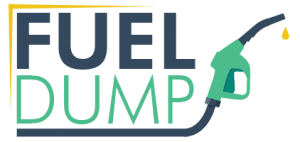Product FAQs
Product FAQs
Search for the product you need info on below, if you cannot find the answer you are looking for please get in touch with us.
Atkinson Tankmaster Valve & Sight Gauge
Please click the link to view/download or print a fitting instruction sheet.
TO OPERATE THE SIGHT GAUGE: On the side of the Tankmaster body above the oil line there is a “Pull to read button” to take a reading, pull and hold the button in the open position until the level in the sight gauge stabilises. When the knob is released it will return to the closed position automatically.
TO OPERATE THE CONTROL VALVE: The control valve hand wheel is to be found on the front of the Tankmaster. By turning the wheel the valve is opened and closed as required. By turning the wheel Clock wise, the valve closes. With valve fully closed the hand wheel will spin freely in the clockwise direction.
To open the valve the hand wheel is turned anti-clockwise until the wheel stops. (It is advisable to turn the hand wheel one quarter of a turn clockwise when fully open; this helps to stop the threads locking between operations).Sight tubing may over time discolour requiring it to be replaced. The Tankmaster sight tube assembly can be replaced as a unit eg. 4’6” (TM4480) or the tube can be replaced with a cut length from a role of sight Tubing. (COM 2080).You may wish to replace the green level indicator float SG2000 at the same time as you replace the sight tubing.
NOTE: The fire valve is situated in the middle of the hand-wheel. If the fire valve has activated the valve spindle will have pushed the soldered bush out of the hand wheel, closing the valve. The hand wheel (TM4310) will need replacing before the valve can be operated again.
TANKMASTER VALVES MUST BE SERVICED AT LEAST EVERY 12 MONTHS:
- Carefully remove the circlip on the end of the control valve spindle. Turn the hand-wheel clockwise until it spins free and can be removed.
- Apply copper ease or similar grease to the threads of the hand wheel and replace the hand wheel and circlip. DO NOT at this point operate the hand-wheel into the open position.
- Pull the “Pull to read” button fully into the open position and apply copper ease or similar grease to the pull to read shaft working it into the body by pulling and releasing the button.
- Replace the filter as follows. First make sure you have your new TM4660F replacement filter kit. The Tankmaster filter is not a washable filter! The filter is situated on the bottom of the Tankmaster.
- With the hand wheel in the closed position place a container under the Tankmaster to catch any spillage from the filter when it is removed.
- Using a 17mm spanner, remove the bolt under the filter bowl. Remove the bowl and slide the filter down the filter tube and discard. Remove the bowl seal located in the Tankmaster body bowl groove and discard;
- Finally remove the collapsible seal from the bowl fixing bolt and discard. From the new filter kit take the new bowl seal “O” ring and fit into the Tankmaster body groove.
- Slide the new filter home up the filter tube until the filter tube appears through the bottom of the filter. Fit the new collapsible seal to the 17mm bolt insuring that the rounded edge is under the bolt head.
- After cleaning any sludge from the filter bowl locate the bowl into the “O” ring groove of the Tankmaster Body, insert the bolt and tighten using a 17mm spanner. (Do not over tighten).
- On completion of the service pull and hold the “pull to read” button until there are no air bubbles rising up the sight tube.
Alternatively, follow our step by step video guide on how to do this:
The only differences between the two versions of the Tankmaster are the length’s of the filter bowls, the Mark I filter bowl will measure 2 1/2″ deep from the body. A Mark II will only measure 1 1/4″ deep from the body.
The ‘old’ paper filter for the Mark I Tankmaster is no longer available. With the introduction of plastic oil tanks, which are generally fitted on the floor, it was necessary to reduce the length of the original Tankmaster filter bowl (2 1/2″ Deep) in order to provide room for the clearance needed to service the Tankmaster and replace the filter.
This led to the introduction of the Tankmaster Mark II, which has a shorter filter bowl (1 1/4″ deep) and consequently a shorter filter, which has also changed to plastic. It is possible to use the filter replacement kit (TM4660F), which is designed for use with the series II version on the older mark I version.
This is done by adding a small cable tie wrapped around the centre shaft within the filter bowl so that it holds the filter up against the body of the Tankmaster. See sketch below. The filter kit also contains two new o-rings, one for the top of the filter bowl and one for around the screw at the bottom of the filter bowl.
When removing the filter bowl the existing bottom O-ring will appear to be flat. This is because it has been compressed into shape. Your new O-ring for fitting around the screw will be tapered and must be fitted with the narrow edge facing up towards the filter bowl.

Alternatively, you can easily upgrade your Mark I Tankmaster to a Mark II Tankmaster with our upgrade kit – see here
Atkinson Tanktop – Top Off Take Valve
BOTTOM OUTLET:
Gravity is what makes a bottom outlet tank functional, it feeds the oil through the oil line to the appliances without the use of a pump from the boiler. When installing a bottom outlet valve on a bunded tank it means that the bund is now breached by putting an outlet pipe between the primary tank and the bund wall in order to extract the oil. This has all the weight of the oil behind it, should there be a leak, it could lead to a catastrophic pollution as this is forced out into the environment. These leaks may not be obvious especially if the tank is installed underground and could go on for years, costing people money on refilling their tanks not knowing there is a leak.
TOP OUTLET:
Top outlet tanks work by drawing oil from the top of the tank and is considered ‘best practice’ from OFTEC which is the regulation body that is further controlled by BSI. The innovative product has all the components required for drawing fuel oil from the top of the storage tank in one unit (no joints to leak oil out of or let air in). It incorporates all of the following into one neat, easy to install, unit :
- Floating Suction head
- Silcon suction tube (1.6m)
- Non Return Valve
- 50 Micron Filter
- Diaphram Anti-Siphon Valve
- Anti-Spill Valve
- Tank Inlet Fitting 1″ BSPM
- Purging/Priming Button
- Surface gasket
- Totally Waterproof
For the Tank Top to work, there must be a de-aerator installed, due to the Tank Top the oil line will be under negative pressure which means that small air bubbles can form when the oil is being drawn through the pipework. By installing one of these, all oil passes through the automatic oil de-aerator, which effectively removes all gas/air bubbles from the system. This eliminates oil pump and nozzle problems associated with gas/air in the oil – providing a cleaner burn at the boiler.
ADVANTAGES OF INSTALLING A TANK TOP:
- Environmentally the safest option, it is a product supported by the Environment Agencies and OFTEC
- Easy to install into new installations or existing pipework
- Using a de-aerator in the line will improve the quality of the oil being fed to the boiler
- Drawing oil from the top of the tank which provides the cleanest oil to the boiler
- Lessens the risk of a leak and damaging the environment
- The Tank Top is compatible with plastic bunded oil tanks and plastic single skin oil tanks.
FITTING ON A STEEL TANK:
- With the back nut still on, dress the Tanktop 1” BSP thread with PTFE tape. Thread the float and suction pipe through the 1” BSPP nipple on the top of the tank and screw home.
- Position the Tanktop so the oil line fitting is pointing in the desired direction and nip the back nut down onto the tank nipple.
- Cut the 10mm oil line to be used, with a tube cutter NOT a hacksaw.
- Insert the 10mm pipe into the hydraulic 10mm fitting or compression fitting (if using compression fittings make sure a support tube is used) making sure the pipe is fully home.
- Having fitted all ancillary equipment in the line (using support tubes in all joints) to the pressure jet burner (including a de-aerator and the bypass screw in the burner pump) fire up the burner. The burner should be able to pull the fuel through but if the pipe is long with a lift to the burner the prime button can be pressed whilst the burner is running to open all the Tanktop valves. This will bypass the anti-siphon valve making it easier for the burner to prime the line.
FITTING ON A PLASTIC TANK:
- Drill a 30mm hole in a flat area on top of the primary tank.
- Thread the float and suction pipe through the 30mm hole.
- Orientate the 10mm hydraulic or compression fitting to the desired pipe direction, screw the 3 legs down with the screws provided.
- Cut the 10mm oil line to be used, with a tube cutter NOT a hacksaw.
- Insert the 10mm pipe into the hydraulic or compression fitting (if using compression fittings make sure a support tube is used) making sure the pipe is fully home.
- Having fitted all ancillary equipment in the line (using support tubes in all joints) to the pressure jet burner (including a de-aerator and the bypass screw in the burner pump) fire up the burner. The burner should be able to pull the fuel through but if the pipe is long with a lift to the burner the prime button can be pressed whilst the burner is running to open all the Tanktop valves. This will bypass the anti-siphon valve making it easier for the burner to prime the line.
CHANGING THE FILTER ON A TANK TOP:
- If fitted remove Tanktop cover.
- Remove the three M4 socket cap head bolts.
- *Using a flat screw driver insert into slot above the oil line fitting and gently twist to separate the filter housing.
- Remove the two O-rings and the filter.
- Fit the new large O-ring from the filter kit. Fit the new filter from the filter kit.
- Fit the new small O-ring ring from the filter kit.
- Replace the top back into the body ensuring that the screw driver slot is over the oil line fitting.
- Refit the three M4 socket cap head.
* NOTE: This filter chamber will be full of fuel.


